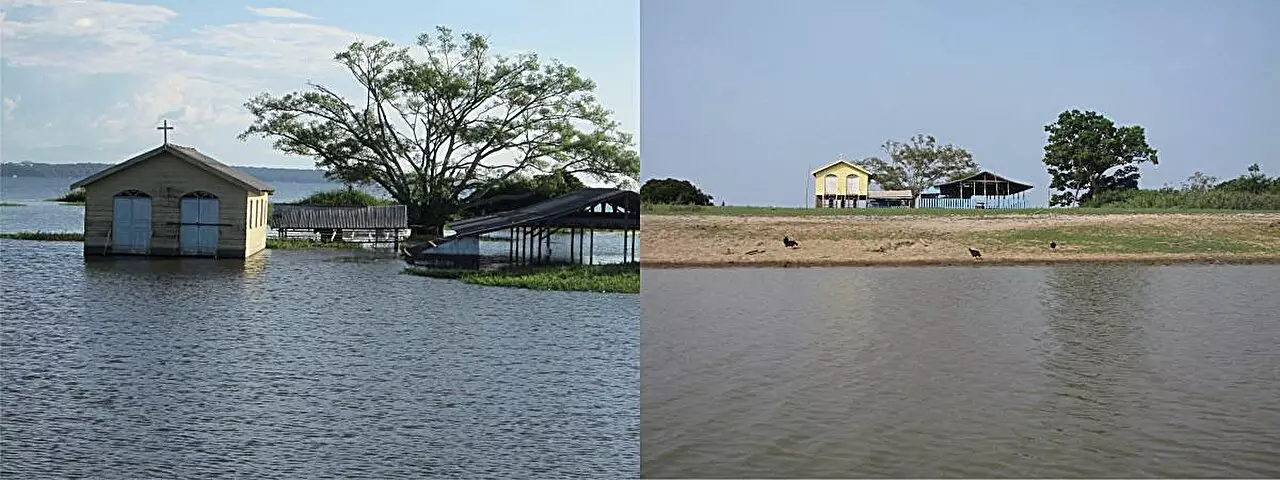The Amazon Rainforest, often referred to as the “lungs of the Earth,” plays a crucial role in global ecological health due to its ability to sequester carbon and regulate atmospheric gases. Recent research by scientists at the University of São Paulo highlights alarming projections regarding how climate change might alter methane dynamics within this vital ecosystem. As the climate warms and extreme weather phenomena become more frequent, the delicate balance between methane production and absorption—both critical processes in mitigating greenhouse gases—could shift dramatically.
The Amazon’s floodplains—vast expanses of land that can remain submerged for several months—are hotspots for methane emissions, contributing significantly to global wetland methane outputs. Current studies indicate that these areas may be responsible for up to 29% of such emissions globally. Conversely, the region’s upland forests act as potent methane sinks, effectively absorbing emissions and facilitating ecological equilibrium. The recent study underscores that the challenges posed by changing rainfall patterns and increased temperatures could diminish these upland forests’ efficiency in capturing methane, with projected declines of up to 70% in these systems’ methane uptake.
In a controlled 30-day experimental setup, researchers analyzed soil samples from distinct ecological zones—floodplains and upland forests—from the municipalities of Santarém and Belterra in Pará, Brazil. Utilizing advanced genetic sequencing and real-time quantitative PCR, the study identified and quantified the microbial communities responsible for both methane production and consumption. While floodplain samples did not exhibit significant shifts in methane emission patterns, an increase in methane-producing microorganisms was noted, hinting at a potentially troubling rise in future emissions. Conversely, upland soil exhibited a marked decline in methane consumption, especially under warm, dry conditions, suggesting these ecosystems are more vulnerable to climatic fluctuations.
The Potential Ecosystem Imbalance
Julia Brandão Gontijo, leading author of the study, voiced concern regarding these findings, emphasizing that the adaptability of floodplain microbiomes to extreme weather may come at the expense of upland forest microbiomes. As floodplain environments adjust to climatic extremes, the risk exists that upland forests may fail to keep pace in absorbing methane effectively, thereby disrupting the existing balance of greenhouse gas emissions in the Amazon. This imbalance poses significant risks not only for local ecosystems but also for global climate strategies, given the Amazon’s pivotal role in carbon cycling.
The research team, which included experts from institutions across the United States and Brazil, provided a critical assessment of the broader implications of their findings. Notably, atmospheric methane levels have increased by approximately 18% in the last four decades, signaling a need for urgent intervention. The potential rise in methane emissions from the Amazon—alongside reduced absorption capacity of upland forests—could exacerbate global warming, thereby impacting climate policies worldwide.
Moving forward, the study’s authors stress the importance of conducting both field experiments and laboratory analyses to deepen the understanding of methane cycling dynamics under these shifting climatic conditions. The identification of various methanotrophic microorganisms that convert methane into energy offers a glimmer of hope, indicating that certain ecological processes may counterbalance rising emissions. However, cultivating such dynamics requires informed policy interventions aimed at protecting these essential ecosystems.
In light of the intricacies outlined by this study, it is clear that effective conservation strategies must be prioritized. Policymakers and stakeholders are urged to consider the nuanced interactions within the Amazon’s ecological framework—particularly concerning microbial activity and methane dynamics. Climate change presents challenges that transcend local boundaries; thus, collaborative efforts aimed at preserving the Amazon are crucial for maintaining its vital functions in regulating global atmospheric conditions. Understanding and addressing the implications of climate change on the Amazon’s methane dynamics is not just an environmental issue, but a pressing global responsibility that requires immediate attention.

